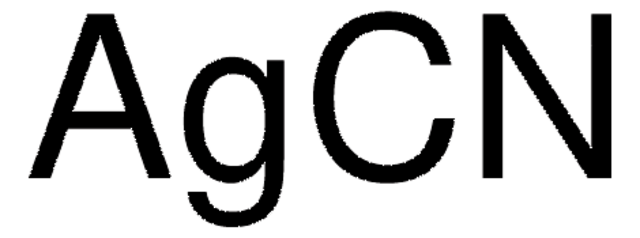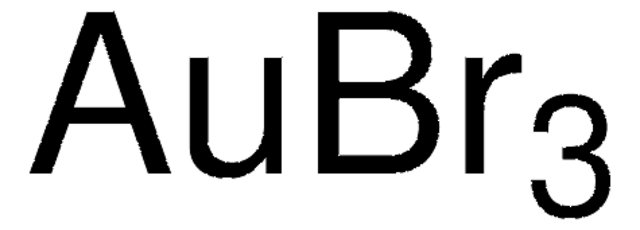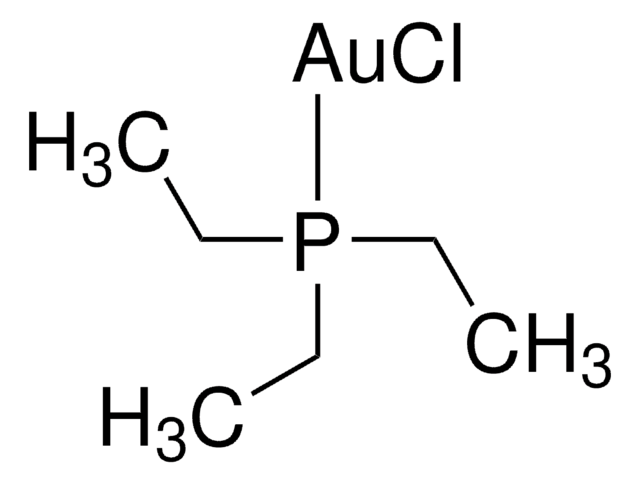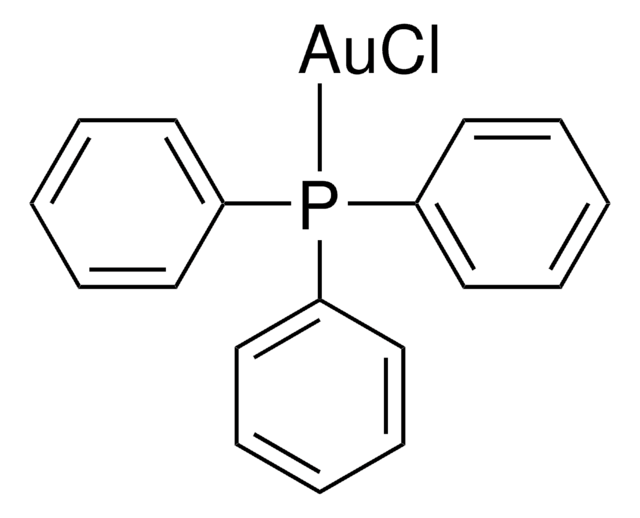All Photos(1)
About This Item
Linear Formula:
AuCN
CAS Number:
Molecular Weight:
222.98
EC Number:
MDL number:
UNSPSC Code:
12352300
PubChem Substance ID:
NACRES:
NA.23
Recommended Products
Quality Level
Assay
99.9% trace metals basis
form
powder
reaction suitability
core: gold
density
7.14 g/mL at 25 °C (lit.)
SMILES string
[Au]C#N
InChI
1S/CN.Au/c1-2;
InChI key
DRJJJWGHLJZDGQ-UHFFFAOYSA-N
Looking for similar products? Visit Product Comparison Guide
Signal Word
Danger
Hazard Statements
Precautionary Statements
Hazard Classifications
Acute Tox. 1 Dermal - Acute Tox. 2 Inhalation - Acute Tox. 2 Oral - Aquatic Acute 1 - Aquatic Chronic 1
Supplementary Hazards
Storage Class Code
6.1B - Non-combustible acute toxic Cat. 1 and 2 / very toxic hazardous materials
WGK
WGK 3
Flash Point(F)
Not applicable
Flash Point(C)
Not applicable
Personal Protective Equipment
dust mask type N95 (US), Eyeshields, Gloves
Choose from one of the most recent versions:
Already Own This Product?
Find documentation for the products that you have recently purchased in the Document Library.
Customers Also Viewed
Philip M Yangyuoru et al.
Journal of inorganic biochemistry, 102(3), 576-583 (2008-02-08)
Electrospray ionization spectra of potential cyanide-containing gold-drug metabolites revealed additional, weak, unanticipated peaks at approximately twice the mass of the gold(I) and gold(III) cyanide complexes. The exact masses correspond to proton-linked bimetallic complexes, [H[Au(CN)(m)](2)](-), (m=2,4). Further investigation revealed a total
G G Graham et al.
Biochemical pharmacology, 56(3), 307-312 (1998-09-23)
There is considerable evidence that the anti-rheumatic gold complexes are activated by their conversion to aurocyanide. In order to understand the mechanism of production of aurocyanide, we investigated the involvement of myeloperoxidase in the reaction. This haem enzyme of neutrophils
Hong-ping Tang et al.
Guang pu xue yu guang pu fen xi = Guang pu, 24(6), 752-755 (2005-03-16)
Quaternary ammonium salt has strong affinity with gold in cyanide solutions, but it is not readily stripped. Stripping with acidic thiourea solutions and air sparging shows promise. There are some reports on the process of thiourea stripping, but little about
Xiandi Gong et al.
The Journal of general physiology, 122(6), 673-687 (2003-11-12)
Chloride permeation through the cystic fibrosis transmembrane conductance regulator (CFTR) Cl- channel is blocked by a broad range of anions that bind tightly within the pore. Here we show that the divalent anion Pt(NO2)42- acts as an impermeant voltage-dependent blocker
Xiandi Gong et al.
The Journal of physiology, 540(Pt 1), 39-47 (2002-04-03)
Lyotropic anions with low free energy of hydration show both high permeability and tight binding in the cystic fibrosis transmembrane conductance regulator (CFTR) Cl(-) channel pore. However, the molecular bases of anion selectivity and anion binding within the CFTR pore
Our team of scientists has experience in all areas of research including Life Science, Material Science, Chemical Synthesis, Chromatography, Analytical and many others.
Contact Technical Service











